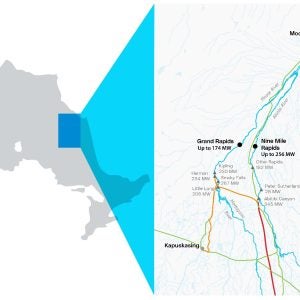Sixteen international and national organisations representing the global hydropower sector have released a joint statement setting out guiding principles for energy infrastructure policy in the Covid-19 recovery.
The organisations represent hydropower developers, operators, manufacturers, researchers and innovators including the world’s largest hydropower producers in China, the United States, Canada and Russia, among other countries. They are: International Hydropower Association (IHA); WaterPower Canada; China Society for Hydropower Engineering; ACOLGEN; Indonesia Hydropower Association; Small Hydropower Plants Association of the Kyrgyz Republic; Mexican Association of Hydroelectricity; Small Hydropower Association Mongolia; Energy Norway; International Centre for Hydropower (ICH); Polish Hydropower Association / TEW; Polish Association for Small Hydropower Development; Association "Hydropower of Russia"; Hydro Power Association of Uganda; British Hydropower Association (BHA); and the National Hydropower Association (NHA)
Coordinated by the International Hydropower Association (IHA), the statement sets out how the coronavirus pandemic has demonstrated hydropower’s resilience and critical role in delivering power and water supplies to communities, industry and essential services.
Widespread uncertainty and liquidity shortages have however put financing and refinancing of many hydropower projects at risk. In some regions, new and upgrade projects have also been halted, contributing to a fall in confidence regarding future investments and operations.
The 16 organisations call on policy-makers to recognise hydropower’s vital importance to the clean energy transition, due to the unique services it provides to integrate and support variable renewables such as solar and wind.
“As the single largest source of renewable electricity with unique flexibility services to support the integration of variable renewable energy, hydropower will be vital to the future energy system. All countries that have achieved 100 per cent renewable electricity have relied heavily on hydropower.
“Furthermore, hydropower delivers vital means of managing freshwater, providing supplies for agriculture, homes and businesses, and mitigating the impacts of extreme weather events such as floods and drought.
“Yet hydropower’s contribution in maintaining system reliability has not been properly recognised, incentivised by policy makers or appropriately valued by the market," the statement reads.
The hydropower and generator associations set out the following principles for green and resilient infrastructure stimulus packages as they call on decision-makers to build more sustainable hydropower projects:
- Ensure the recovery facilitates the development of sustainable hydropower projects as an essential part of the energy transition and wider development strategy to help kick-start our global economy. This should include modernisation and rehabilitation projects.
- Focus on sustainable hydropower development to ensure that economically viable and shovel-ready projects can commence.
- Where possible and within reason, fast-track planning approvals to ensure the development and modernisation of hydropower projects can commence as soon as possible to help stimulate the economy.
- In regions where this applies, extend any construction deadlines for hydropower projects that have previously benefited from government programmes to secure the finance already committed.
- Given the increasing need for long-duration energy storage such as pumped storage, work with regulators and system operators to develop appropriate compensation mechanisms that recognise and value all the attributes hydropower provides to the grid.
- Not only maintain but increase the ambition of renewable energy and climate change targets which incorporate the role of sustainable hydropower development. This will instil much needed confidence in the sector.
The 16 organisations in addition stress the importance of all projects adopting good environmental, social and governance practices in line with the internationally recognised Hydropower Sustainability Tools.






